C.figurata Mannerheim, C.rufa L. and C.decipiens Baudi are separated by the red apex of the meta-femora. C.decipiens may be darkened in the middle of the femora but the apex is red and the well defined black mark on the disc of the pronotum makes the species unmistakeable within Cantharis.
C.pallida Goeze and C.cryptica Ashe both have the apex of the meta-femora darkened, usually black and are very similar beetles, indeed C.cryptica is not included in Joy where both species should key out to C.pallida.
They are, however, easily separated by two characters; the apical edge of the last segment of the maxillary palps in C.pallida is darkened sometimes almost black. In C.cryptica it is entirely yellow although sometimes may be very finely darkened. In C.pallida the elytral pubescence is of one type, uniform and quite dense across the whole surface, in C.cryptica it is of two types; a recumbent layer interspersed with longer, more erect hairs. Sometimes this can be difficult to see, especially without comparitive material. Try tilting the specimen towards you (at X20) with the light from above. As you gently tilt the beetle in C.cryptica the first hairs to catch the light are the sporadic longer hairs whereas in C.pallida the dense pubescence becomes visible.
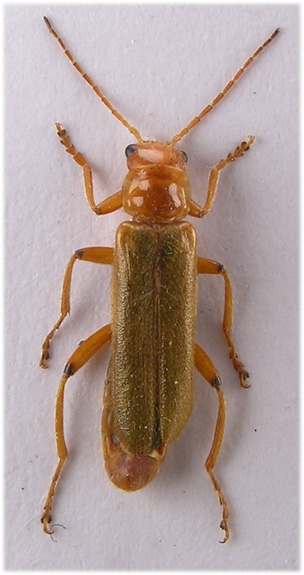
C. cryptica.
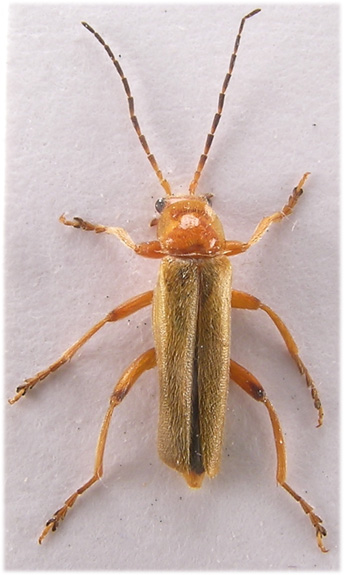
C. pallida
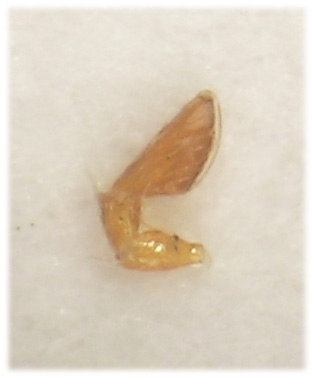
C. cryptica palp
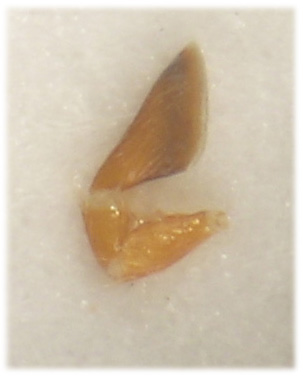
C. pallida palp
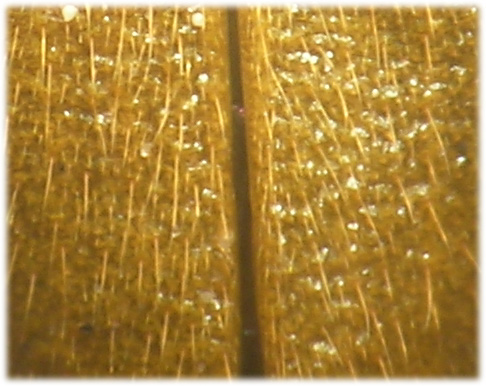
C. cryptica
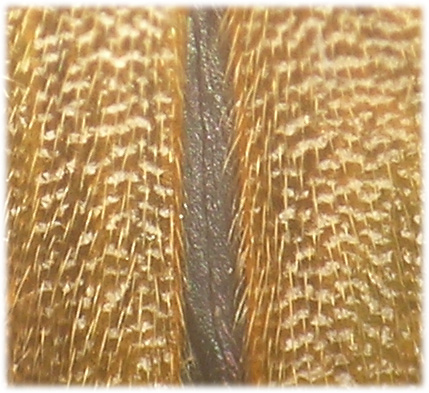
C. pallida